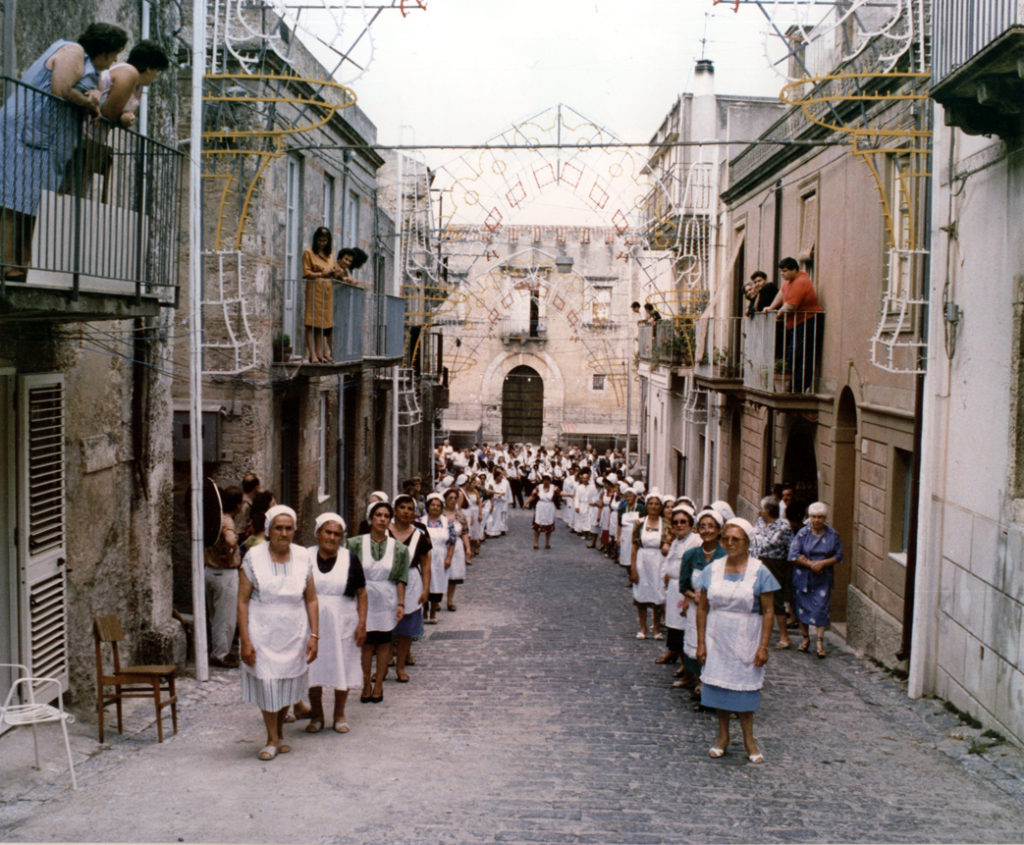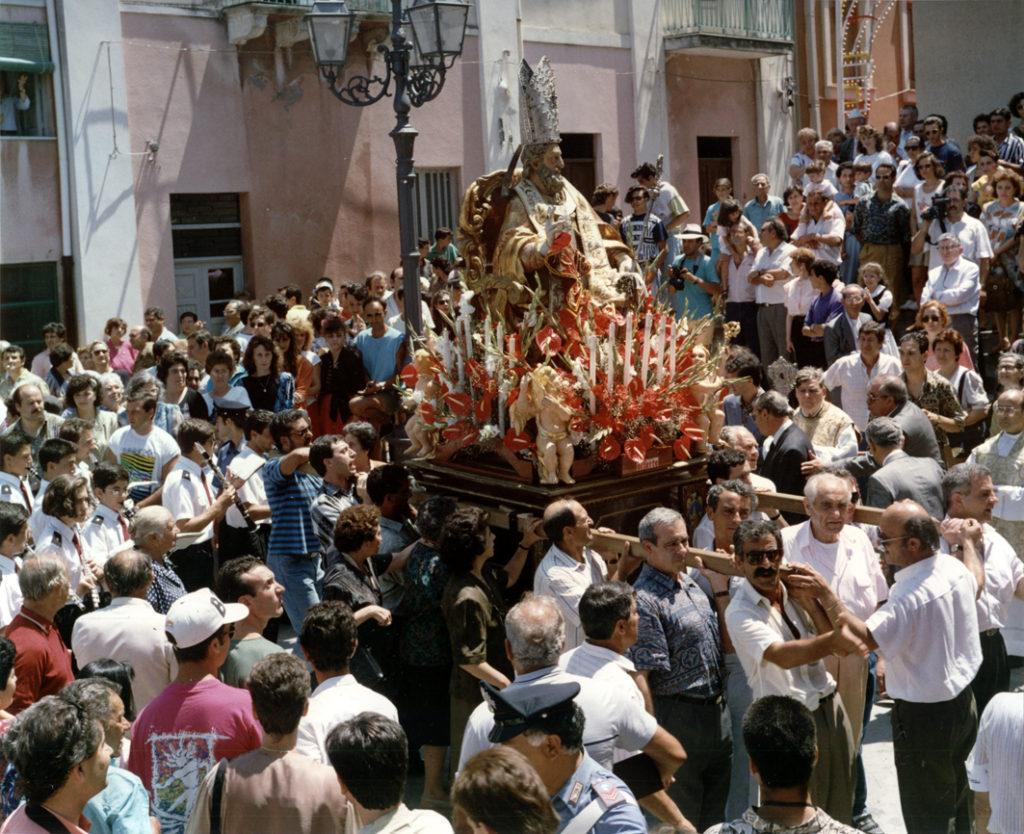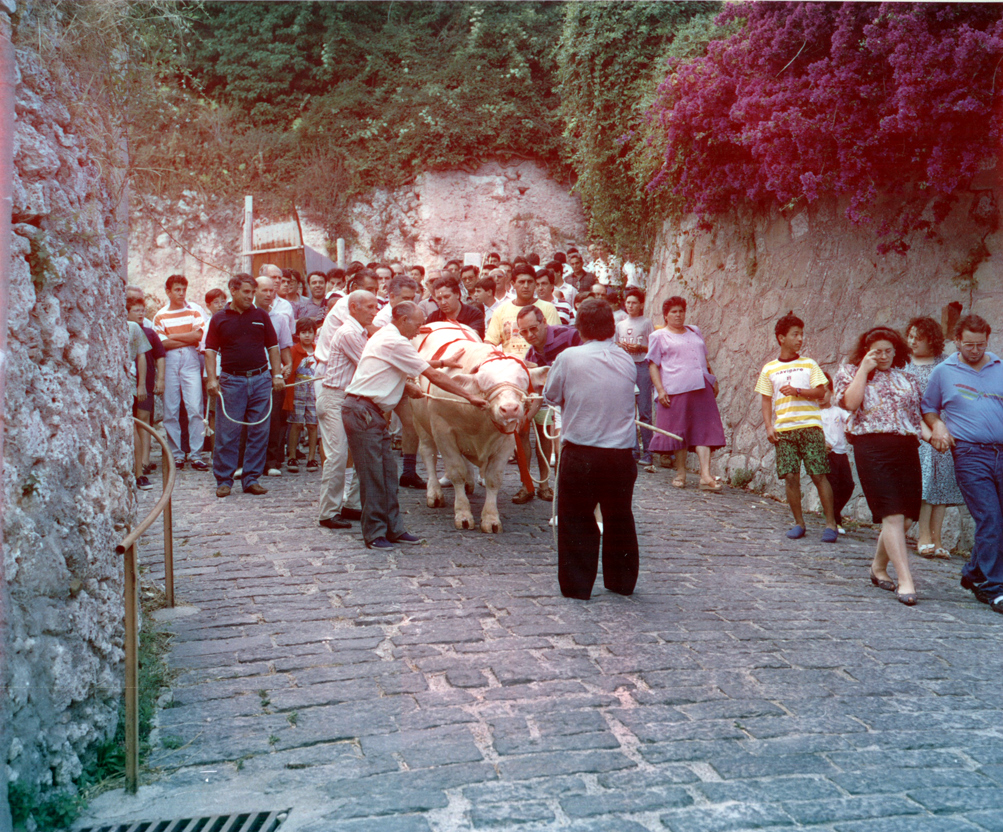The celebration of the Convito in Roccavaldina
Originally, the festival is celebrated during the first week of August. It carries unique characteristics, as it is held, at a minimum, once every five years. The timing is decided through an agreement between the parish priest and the current mayor. More specifically, within this first week of August, the actual days of celebration are Friday, Saturday, and Sunday. The festival’s temporal structure has distinctive traits which highlight the particularities of the event itself. If we consider a festival as a form of reversal from the order of daily life, then we can clearly see how a complex celebration such as the Convito may represent—through its very inversion, which does not occur annually but only every five years — a kind of symbolic renewal, spanning from the existential aspect to the social connotation, for the entire community.
By tradition, the celebration unfolds over three days during the first week of August.
Tradition tells that on Friday, the calf that had been selected—the so-called giovenco—was paraded in a procession through the village streets until it reached Piazza Umberto I. There, it would be blindfolded and adorned with red ribbons. The blindfold served to prevent the animal, frightened by the crowd, from escaping into the procession. Once the procession was concluded, the calf was led into a storage building along the town’s main street. There, it was sacrificed. In the past, the animal was killed with a blade used to sever the jugular vein. Later, this sacrificial practice was abandoned in favour of a slaughterhouse firearm used for bovine butchery.
The sacrifice of the giovenco in Roccavaldina mirrors the classical structure of all sacrificial rites. What is sacrificed is always something consecrated, meaning imbued with a sacred aura that allows it to act as an intermediary between those meant to benefit from its destruction on the one hand, and the superhuman power (the deity) addressed through the act on the other. The giovenco is blessed by the priest. Its sacred aura is emphasized both by the mythical dimension—where the animal is chosen as a sacrificial victim for Saint Nicholas—and by the blessing itself, performed at that precise ritual moment.
On Saturday, once the animal had been sacrificed and the community had witnessed the ritual moment, preparations began for the sacred meal. All the timings that structure this phase are important. The day began in the morning with the cleaning of the giovenco’s body. Once cleaned and drained of blood, it was cooked. The rice was then prepared in the broth produced by cooking the meat. The second day of the festival was thus a day of true preparation, leading toward the sacred banquet.
Still today, Sunday includes two processions. It is the day of the encounter. The first procession carries the patron saint, Saint Nicholas, from the main church after Mass. The second procession involves carrying large vessels of rice and meat. These two food items are served without salt. The absence of salt evokes the sacrificial nature of the act. The rice containers are carried on the shoulders. The two processions ultimately converge within the Castle of Roccavaldina.
Historically, at this moment of the rite, the local nobles would distribute food to the less fortunate. This practice served to continuously and ritually reaffirm the mythical occurrence mentioned earlier. All social differences are cancelled (see how the rich help the poor and, in a sense, become their servants), and the entire ritual is imbued with the dynamics of gift and reciprocity. All of this culminates in the sacred meal.
However, only those who declared themselves to be destitute were allowed to take part in the meal. As the ritual unfolds, large cauldrons are lined up in the castle, and all other dishes are assembled. Outside, long tables are prepared. Seating and food are rotated so that all townspeople may attend the sacred meal. Especially notable is the presence of the statue of the patron saint, placed at the heart of the banquet, alongside all who collectively share in the meal.
The structure of the festival today retains the same elements. Data collected from recent celebrations indicate that in the year 2000, the giovenco was sacrificed at the Falsetti palmento. In 2011, at the slaughterhouse. In 2024, the giovenco procession did not take place due to protests by animal rights activists. As a result, the meat used for the sacred meal was purchased from a butcher shop—there was no sacrifice.
This element has been included in the Register of Intangible Heritage of local interest of the Municipality of Roccavaldina, as part of Intervention 4 “Activation of the Observatory on the Intangible Cultural Heritage of the Territory through the application of the REIL methodology – Register of Intangible Heritage of Local Interest”, within the “Ghadan” project, funded by the NRRP (National Recovery and Resilience Plan), Mission: Digitalisation, innovation, competitiveness, culture and tourism, Component: Tourism and culture 4.0, Investment 2.1 “Attractiveness of villages” CUP J29J2200146000.





